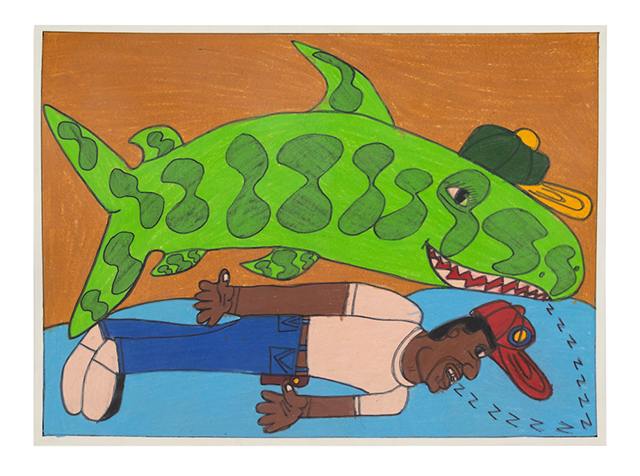October 4–November 15, 2019
Exhibition Opening: Friday, October 4, 6–8pm
View and purchase work online
Creative Growth is pleased to announce Meeting Places: Mangkaja and Creative Growth, a groundbreaking exhibition that pairs Aboriginal artists from Western Australia alongside Creative Growth artists with disabilities. The exhibition is one of the first of its kind in the world and highlights the aesthetic and cultural connections between divergent populations of artists whose work is deeply connected to community and to non-academic artistic traditions.
Both Creative Growth and Mangkaja foster strong communities. Creative Growth is one of the oldest and largest centers for artists with developmental disabilities in the world and has been at the forefront of advocating for work by developmentally disabled artists to be included in the contemporary art world. The organization provides visual art support and studio space to more than 150 artists with developmental disabilities every week, where they are encouraged to become a part of the community of artists while concurrently producing work that is a personal and singular form of communication with the world.
Aboriginal art centers like Mangkaja do not make distinctions about ability; yet they are often stratified based on senior cultural knowledge, where age is seen as a great asset to creativity. They are also safe places where many artists benefit from art as a therapeutic escape to complex life stresses and mental health issues. The art center is a lifeline, a meeting place, and a depository of knowledge. It supports the interests and incomes of contemporary artists and their communities, while remaining connected to Aboriginal culture, the longest continuous artistic tradition in the world.
Co–curators Emilia Galatis, an independent curator who works with the artists in Australia, and Tom di Maria, Director of External Relations at Creative Growth, collaborated during Galatis’ internship at Creative Growth and subsequent trips by di Maria to Australia. Inspired by the pure energy, community power, and the visual impact of each group of artists – and their often marginalized role in the contemporary art world – the exhibition examines intersections of the work itself and the frequent stylistic similarities shared between makers from these two art communities. Speaking to the similarity between the two art centers, Galatis notes, “When you walk into an art center, any art center, whether it’s Creative Growth or Mangkaja, you can feel something is happening. The vastly different work being created between conversations is community art-making at its best.”
The exhibition raises questions about the innate human need to create, and the visual language of community. Is there a visual lingua franca that speaks to us as human beings despite cultural and geographic separation? Within the exhibition, stylistic intersections are often striking. Works by Donald Mitchell (Creative Growth) and Daisy Japulija (Mangkaja) share an interest in an abstract expression of self and space; patterned works by Barry Regan (Creative Growth) and Sonia Kurarra (Mangkaja) are related by obsessive, repetitive stylistic mannerisms; and John Prince Siddon (Mangkaja) and John Martin (Creative Growth) demonstrate a fascination with the animals and objects that surround them, crafting their observations into fantastic personalized environments. Walmajarri sisters Sonia Kurarra and Daisy Japulija, who reside at a facility for palliative, disability, and dementia care that is supported by Mangkaja, are both represented in the exhibition. Their work shares affinities with Creative Growth artists Ruth Stafford and Nicole Storm, who each use decisive, repetitive lines as signifiers in their work.
“It’s exciting to welcome the Aboriginal artists from Mangkaja to Oakland and to exhibit their work alongside the work of Creative Growth artists” says di Maria. “Every artist in the exhibition has a unique voice that responds to their respective artistic tradition and culture and serves as a powerful aesthetic vehicle to engage the viewer. The stylistic similarities are notable and express the inherent human need to place marks on paper, to record a person’s existence and view of the world.“
A catalog with an essay by noted Aboriginal expert Randall Morris from Cavin-Morris Gallery, New York will accompany the exhibition. The exhibition will also take form again in New York in January 2020 at the Outsider Art Fair, where the work will be presented alongside other international artists whose work is non-academic in nature.









